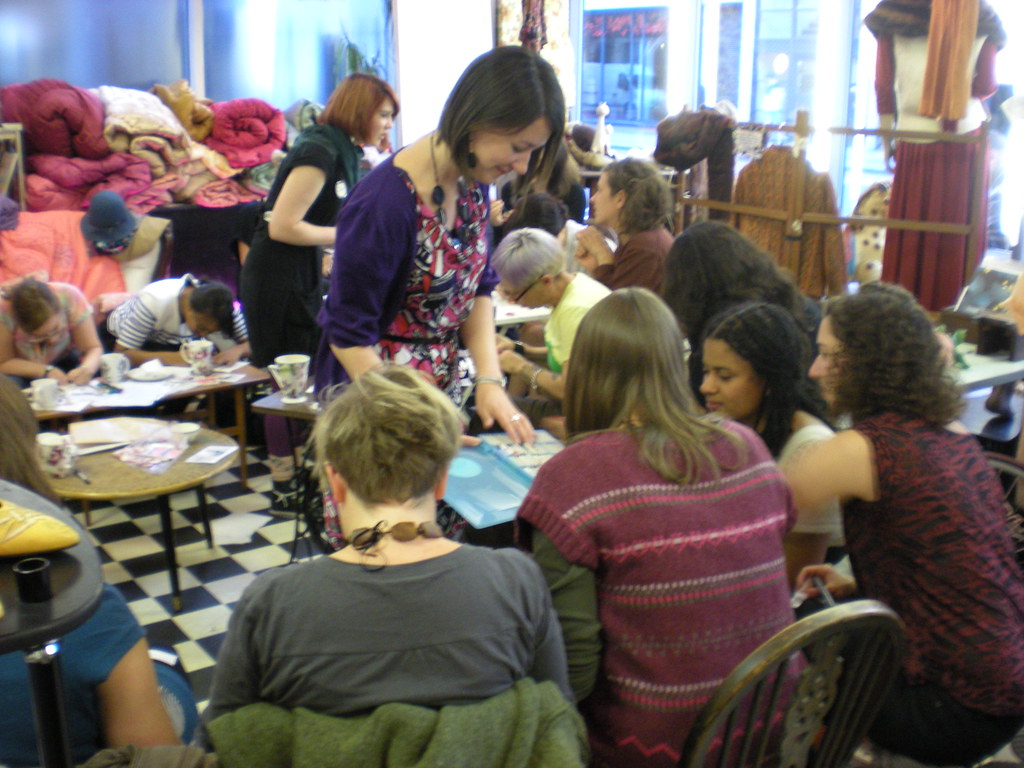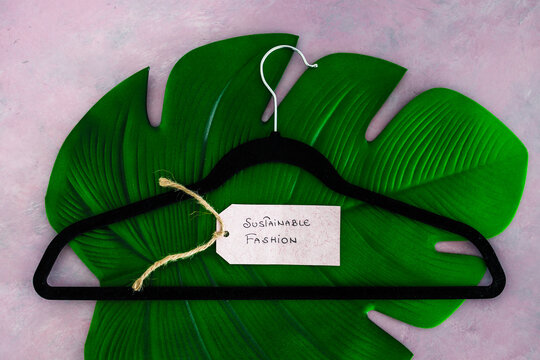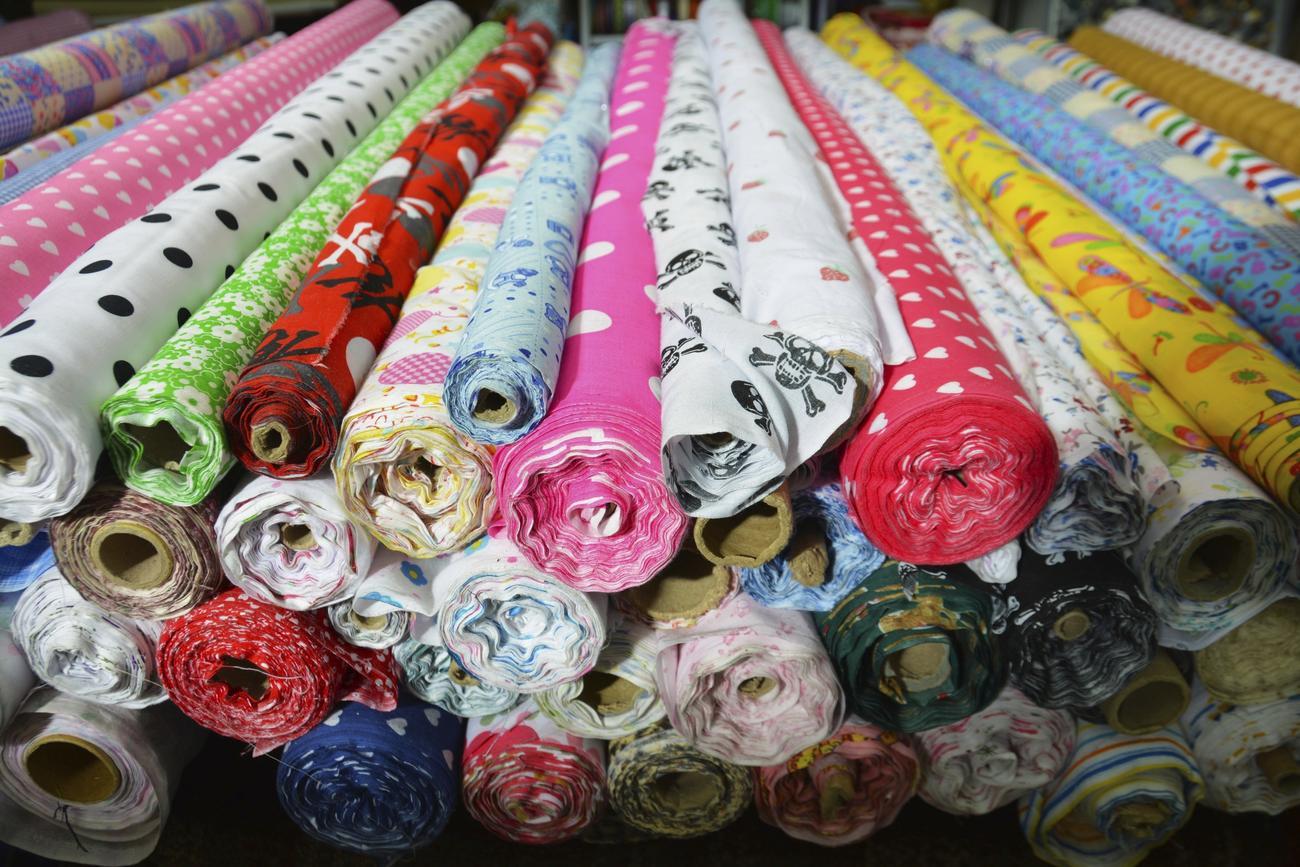The Evolution of Textile Fashion
Textile fashion has been a significant part of the fashion industry for centuries. It is the art of designing, producing, and marketing fabrics and textiles used in clothing, accessories, and home décor. From its humble beginnings to its current status as a multi-billion dollar industry, textile fashion has come a long way.
Historical background of textile fashion
The history of textile fashion dates back to the prehistoric era. The first evidence of textile production can be traced back to the Neolithic period, where humans began to weave fabrics from natural fibers such as wool, cotton, and silk. The ancient Egyptians were known for their intricate textile designs, while the Greeks and Romans were skilled in dyeing and embroidery. During the Middle Ages, the textile industry flourished in Europe, with cities such as Florence, Venice, and Bruges becoming centers for textile production.
Changes in textile fashion through the years
The textile industry has undergone significant changes over the years. The Industrial Revolution brought about the mechanization of textile production, leading to mass production of fabrics and clothing. The 20th century saw the rise of synthetic fibers such as polyester, nylon, and rayon, which were cheaper to produce and easier to maintain. The advent of digital technologies has revolutionized textile design and production, making it easier for designers to create intricate patterns and textures.
Current trends in textile fashion
Today, textile fashion is a dynamic and ever-evolving industry. One of the current trends in textile fashion is the use of sustainable and eco-friendly materials. Many fashion brands are now producing clothing made from recycled fabrics and natural fibers such as organic cotton and bamboo. Another trend is the use of smart textiles, which are embedded with electronic components that can change color, temperature, or texture. Wearable technology is also becoming increasingly popular, with clothing items that can track fitness data or monitor health conditions.
In conclusion, textile fashion has a rich history and a bright future. As technology continues to advance and consumers become more conscious of the environmental impact of fashion, the textile industry will continue to evolve and adapt to meet changing demands.
Impact of Textile Fashion on the Environment
Textile fashion has a significant impact on the environment, from the production of raw materials to the disposal of clothing items. The fashion industry is one of the largest polluters globally, second only to the oil industry. According to Textile Fashion Study, the environmental challenges caused by textile fashion are numerous.
Environmental challenges caused by textile fashion
One of the most significant challenges is the high water consumption required for textile production. According to Fashion and Textiles, it takes an estimated 2,700 liters of water to produce one cotton t-shirt. This water consumption contributes to water scarcity in many parts of the world. Another challenge is the use of toxic chemicals in textile production, which can pollute water sources and harm the health of workers and local communities. According to Fibre2Fashion, toxic chemicals such as dyes, bleach, and finishing agents are used in textile production.
The rise of sustainable textile fashion
In recent years, there has been a growing awareness of the environmental impact of textile fashion, leading to the rise of sustainable and eco-friendly textile production. Sustainable textile production aims to reduce the negative impact of fashion on the environment by using organic or recycled materials, reducing waste, and minimizing the use of toxic chemicals. According to Textile Apparel, sustainable textile fashion brands prioritize transparency and exploitation-free supply chains.
Innovative solutions for eco-friendly textile fashion
Innovative solutions for eco-friendly textile fashion include the use of natural fibers such as bamboo, hemp, and organic cotton. The production of these fibers requires less water and fewer chemicals compared to traditional cotton production. According to Textile School, another solution is the use of recycled materials, such as plastic bottles, to create fabrics. Some fashion brands are also experimenting with circular fashion, where clothing items are designed to be reused, recycled, or upcycled at the end of their lifecycle.
In conclusion, the impact of textile fashion on the environment is significant, but there are innovative solutions available to reduce this impact. Sustainable textile production and circular fashion are promising solutions that can help reduce water consumption, minimize waste, and reduce the use of toxic chemicals in the fashion industry.
Technological Advancements in Textile Fashion
Technology has played a significant role in the evolution of textile fashion. From the use of digital technologies in textile design to the development of smart textiles, technology has revolutionized the textile industry.
The role of technology in textile fashion
The role of technology in textile fashion has been significant. Computer-aided design (CAD) software allows designers to create intricate patterns and designs quickly and efficiently. The use of digital printing technology has made it possible to create complex and colorful textile designs that were once impossible to achieve. According to Textile Fashion Study, other technological advancements include the use of laser cutting and 3D printing.
Smart textiles and their applications
Smart textiles are fabrics that are embedded with electronic components such as sensors, LEDs, and microcontrollers. According to Fashion and Textiles, smart textiles have a wide range of applications, from healthcare and sports to fashion and entertainment. For example, smart textiles can be used to create clothing items that can monitor vital signs, track fitness data, or change colors and textures based on the wearer’s mood or environment.
3D printing in textile fashion
3D printing is a process of creating three-dimensional objects by depositing layers of material on top of each other. According to Textile Fashion Study, 3D printing has numerous applications in textile fashion, from creating intricate textile designs to producing fully functional clothing items. 3D printed textiles can be made from a wide range of materials, including plastics, metals, and even food products.
In conclusion, technology has played a significant role in the evolution of textile fashion. From the use of digital technologies in textile design to the development of smart textiles and 3D printing, technology has revolutionized the textile industry and opened up new possibilities for designers and manufacturers.

Social and ethical issues in textile fashion
The use of child labor and subpar working conditions in garment factories are just two of the ethical and social practices the textile fashion industry has faced criticism for. The need for ethical and sustainable fashion practices has grown in recent years as a result.
The issue of child labor in textile clothing
In the textile fashion industry, child labor is a serious problem. 170 million children worldwide are thought to be engaged in child labor, with many of them working in textile and garment factories, according to Fashion and Textiles. Children are denied access to education and other opportunities as a result of the use of child labor, which also violates human rights and promotes poverty and illiteracy.
In garment factories, working conditions are subpar.
Another moral problem in textile fashion is garment factories’ subpar working conditions. Many garment factories in developing nations lack basic safety precautions, such as fire exits and proper ventilation, according to Textile School. Low wages and long hours without sufficient breaks or rest periods are common among workers.
The emergence of ethical and sustainable fashion practices
The need for ethical and sustainable fashion practices has grown in recent years as a result. Fair labor practices, safe and healthy working conditions, and a reduction in the environmental impact of fashion are all goals of ethical fashion practices. The use of eco-friendly materials, waste reduction, and resource conservation are all goals of sustainable fashion practices. Textile Apparel, ethical and sustainable fashion brands place a high priority on transparency and fair labor practices in their supply chains.
The effect of consumer awareness on ethical and environmentally friendly fashion
The demand for ethical and sustainable fashion has been significantly fueled by consumer awareness. Consumers are becoming more concerned about the social and environmental effects of the products they purchase, according to Fashion and Textiles, which is increasing the demand for ethical and sustainable fashion. It is now simpler for customers to research and buy ethical and sustainable fashion products thanks to the growth of social media and online shopping.
In conclusion, the textile fashion industry has drawn criticism for its moral and social transgressions, ranging from the use of child labor to the subpar working conditions in garment factories. Consumer demand, in part, has contributed to a growing awareness of the significance of ethical and sustainable fashion practices. Fair labor practices, guarantee safe and healthy working conditions, and lessen the impact of fashion on the environment are all goals of ethical and sustainable fashion practice.
Future of Textile Fashion
The future of textile fashion is marked by technological advancements, sustainable and ethical practices, and changing consumer preferences. Here are some trends and predictions for the future of textile fashion.
Technological advancements in textile fashion
Technological advancements are expected to continue to play a significant role in the future of textile fashion. According to Textile Fashion Study, innovations such as 3D printing, smart textiles, and digital technologies are expected to transform the textile industry in the coming years. These technologies will make it easier and more efficient to design and produce textile products, leading to new possibilities for designers and manufacturers.
Sustainable and ethical practices in textile fashion
Sustainable and ethical practices are expected to become increasingly important in the future of textile fashion. According to Fashion and Textiles, consumer demand for sustainable and ethical fashion is expected to continue to rise, leading to a growing number of brands adopting these practices. In addition, governments and industry groups are expected to impose stricter regulations and standards for sustainable and ethical textile production.
Changing consumer preferences in textile fashion
Consumer preferences are expected to continue to evolve in the future of textile fashion. According to Textile School, consumers are becoming more conscious of the environmental and social impact of their purchases, leading to a growing demand for sustainable and ethical fashion products. In addition, consumers are expected to demand more customization and personalization in their textile products, leading to new opportunities for designers and manufacturers.
The impact of globalization on textile fashion
Globalization is expected to continue to have a significant impact on the future of textile fashion. According to Fashion and Textiles, the globalization of the textile industry has led to the outsourcing of textile production to developing countries, where labor and environmental regulations are often lax. However, globalization has also led to new opportunities for designers and manufacturers, as well as increased access to new markets and consumers.
In conclusion, the future of textile fashion is marked by technological advancements, sustainable and ethical practices, changing consumer preferences, and the impact of globalization. The textile industry is evolving rapidly, and designers and manufacturers will need to adapt to these changes to stay competitive and meet the demands of consumers.

Environment and Textile Fashion
From the use of non-renewable resources to the pollution of water and air, the textile fashion industry has a significant negative impact on the environment. Here are some of the environmental problems connected to textile fashion and some approaches to solving them.
The effects of non-renewable resources on the environment
For the synthesis of synthetic fibers, the textile fashion industry heavily relies on non-renewable resources like oil and gas. These fibers’ production, according to Textile School, has a significant negative impact on the environment, including greenhouse gas emissions, water pollution, and habitat destruction. Additionally, producing natural fibers like cotton and wool requires a lot of water and energy.
The problem with textile waste
A significant environmental problem connected to textile fashion is textile waste. The average North American consumer produces about 70 pounds of textile waste annually, much of which ends up in landfills, according to Fashion and Textiles. In addition to taking up valuable space in landfills, fertilizer waste also releases dangerous chemicals into the environment as it decomposes.
Strategies for addressing environmental problems in clothing
The environmental problems brought on by textile fashion can be resolved in a number of ways. Textile Apparel claims that some of these tactics are:
- utilizing eco-friendly materials like organic cotton, hemp, and bamboo.
- Adopting environmentally friendly production techniques like using renewable energy and lessening water use.
- putting in place closed-loop production processes that recycle materials like textile waste.
- Promoting circular fashion models that encourage the reuse and recycling of textile products.
The role of consumers in promoting sustainable textile fashion
In promoting sustainable textile fashion, consumers can have a big impact. Consumers can change things, according to Textile School:
- Selecting sustainable and eco-friendly fashion goods.
- Repurposing and repurposing old clothing items to reduce textile waste.
- Supporting charitable organizations or textile recycling initiatives by donating old clothing.
- Supporting ethical and sustainable fashion brands.
In conclusion, the textile fashion industry significantly affects the environment, from the use of non-renewable resources to textile waste. The use of eco-friendly materials, sustainable production techniques, closed-loop production systems, and circular fashion models are just a few ways to address these environmental problems. By making eco-friendly decisions and supporting sustainable and ethical fashion brands, consumers can also contribute significantly to the promotion of sustainable textile fashion.
Textile Fashion and the Economy
The textile fashion industry is a significant contributor to the global economy, providing employment opportunities and contributing to economic growth. Here are some of the ways in which textile fashion impacts the economy.
The economic impact of textile fashion
According to Textile School, the textile fashion industry is a significant contributor to the global economy, accounting for over $2 trillion in annual revenue and providing employment to millions of people. The industry is also an important source of foreign exchange earnings for many countries, particularly in the developing world.
The global textile fashion market
The global textile fashion market is a highly competitive and dynamic industry, with many different segments and players. According to Fashion and Textiles, the global textile fashion market is expected to continue its growth trajectory in the coming years, driven in part by rising consumer demand for sustainable and ethical fashion products.
The impact of globalization on textile fashion
Globalization has had a significant impact on the textile fashion industry, with many textile manufacturers moving their production to developing countries where labor costs are lower. According to Textile School, this has led to increased competition and price pressures, as well as concerns about working conditions and labor rights in the textile industry.
The impact of technology on textile fashion
Technology has also had a significant impact on the textile fashion industry, with innovations such as 3D printing, smart textiles, and digital technologies transforming the way textile products are designed and produced. According to Textile Fashion Study, technology has also made it easier for textile manufacturers to respond to changing consumer preferences and market trends.
The future of textile fashion and the economy
The future of textile fashion is marked by technological advancements, sustainable and ethical practices, and changing consumer preferences. According to Fashion and Textiles, the future of the textile fashion industry is expected to be shaped by a growing demand for sustainable and ethical fashion products, as well as technological advancements that make textile production more efficient and eco-friendly.
In conclusion, the textile fashion industry is a significant contributor to the global economy, providing employment opportunities and contributing to economic growth. The industry is highly competitive and dynamic, with many different segments and players. The impact of globalization and technology on the industry has been significant, and the future of textile fashion is expected to be shaped by sustainable and ethical practices, changing consumer preferences, and technological advancements.

The final step is to wrap up
The history, current trends, and potential future possibilities of textile fashion have all been examined in this article. We’ve discussed the effects of textile fashion on the economy and environment as well as the function of technology and shifting consumer preferences in shaping the sector.
We sincerely hope you found this article interesting and informative. Check out our other fantastic content if you’re interested in learning more about textile fashion and related topics.
We appreciate you reading, and we’ll see you in the next article!
Answers To Common Questions
Who are some sustainable textile fashion brands?
Some sustainable textile fashion brands include Patagonia, Everlane, and Reformation.
What is circular fashion and how does it work?
Circular fashion is a model that promotes the reuse and recycling of textile products, reducing waste and increasing sustainability.
How can I make my textile fashion choices more sustainable?
You can make your textile fashion choices more sustainable by choosing eco-friendly materials, supporting sustainable and ethical brands, and reducing textile waste.
Who are some influential textile fashion designers?
Some influential textile fashion designers include Alexander McQueen, Coco Chanel, and Calvin Klein.
What is fast fashion and why is it a problem?
Fast fashion is a model that promotes the production of inexpensive clothing items at a rapid pace, contributing to textile waste and environmental harm.
How is technology changing the textile fashion industry?
Technology is changing the textile fashion industry through innovations such as 3D printing, smart textiles, and digital technologies that make textile production more efficient and eco-friendly.
